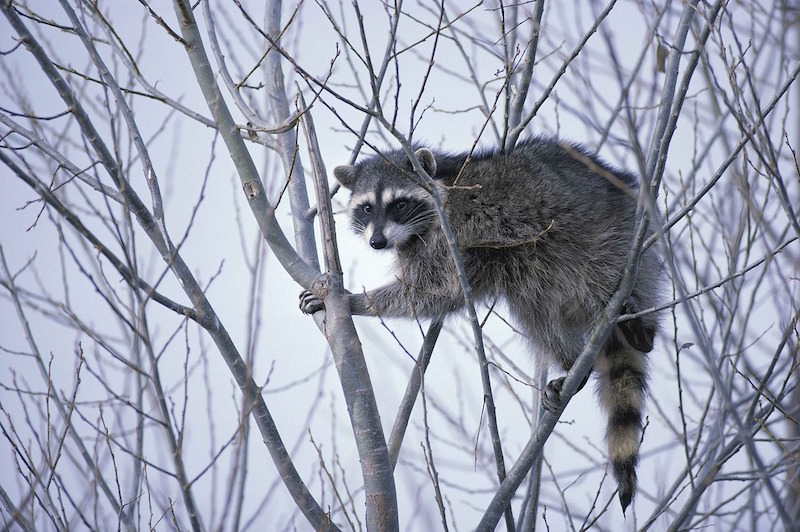Are Raccoons Dangerous?

By Craig Basset, Expert Reviewer for Repellent Guide
published: Feb 05, 2018 | updated: Feb 08, 2018
As with any animal, it is necessary to determine what “dangerous” means. Obviously, some animals – specifically wild ones – are going to be more “dangerous” to humans and other animals than, say, our family dog. But raccoons are unique in assessing their danger to humans and human society. While raccoons will stay mostly to themselves, they have been known to interact with the human population, generally due to human interaction with the raccoon population, and it is this interaction that leads to the problems which make raccoons to be considered dangerous to people.
For the most part, raccoons are scavengers. They are carnivorous, but do not generally hunt and kill their food, choosing instead to go for easy meals. This means that when people feed them – intentionally or otherwise – they are attracting the animals that generally try to avoid people. This has started to develop a relationship where, in some communities, the raccoons are dependent on the human population for food, which means that they will do what is necessary to get food from humans, and that could prove dangerous to the people feeding them. If a raccoon becomes aggressive in its hunt for “free food” from humans, there is no telling how it will react toward the owner of the restaurant or the family dog protecting the garbage can. By not feeding raccoons, they will continue to stay away from humans and keep any aggressive behavior for their real meals in the wild.
People have also decided that raccoons make good pets. Whether it is the increased interaction due to the feeding or just looking at the animal and its unique characteristics, people are increasingly capturing (or purchasing) raccoons for the purpose of keeping them as a pet. While raccoons are more docile than some other wild animals, the fact remains that they are wild animals and should be treated as such. The domestication of dogs and cats took centuries, but people believe that by picking up a baby raccoon and nursing it and caring for it, the animal will act like a dog or a cat. In most instances, there will be no problems – as stated, raccoons are relatively docile – but in that rare situation where Mother Nature kicks in and the wild animal seeks to protect itself or act on its natural instincts, it immediately becomes a threat to the health and safety of the people around it, which could very well include small children. Raccoons are wild animals and should be treated as such, and left to their wild habitat.
Perhaps the biggest threat to humans, and their animal companions, from raccoons comes from the fact that raccoons are carriers of rabies. The disease was first found in raccoon populations in Florida in the 1950s, but quickly spread across the United States. Rabies is a serious disease with a narrow treatment window. Keeping domestic animals treated for rabies will prevent the family dog from becoming a carrier, but an encounter with a rabid raccoon in the wilderness will result in a trip to the hospital and a painful treatment. Avoiding raccoons altogether is not possible, but recognizing the warning signs for a rabid raccoon may help someone avoid getting the disease: sickly appearance, slow movement, odd sounds, and aggressive behavior.
Are raccoons dangerous? No more dangerous than any other wild animal. However, their interactions with humans make them more of a threat to the human population than, say, a lion or a tiger. While most aggressive encounters with raccoons can be avoided by not feeding them and thereby keeping them out of urban areas, a big way to prevent an encounter with a raccoon is to never keep one as a pet. By minimizing the opportunities for raccoons to come in contact with humans – whether the humans plan the interaction or not – it is possible to minimize the number of aggressive encounters and thereby prevent harm coming to people. By avoiding raccoons in the wild, the chance of encountering a rabid animal is minimized. Recognizing the warning signs of rabies will allow one to stay away from a rabid raccoon that is encountered.
Keeping a distance between the human population and the wild animal population of any animal is key to preventing negative interactions between the two. Raccoons are no exception, although many people think it is okay to feed them or keep them as pets. A raccoon is a wild animal, and wild animal instincts take precedence over any “bond” between a human and a raccoon, and those instincts are what are going to lead to negative encounters with these animals.
-
-
Spray



